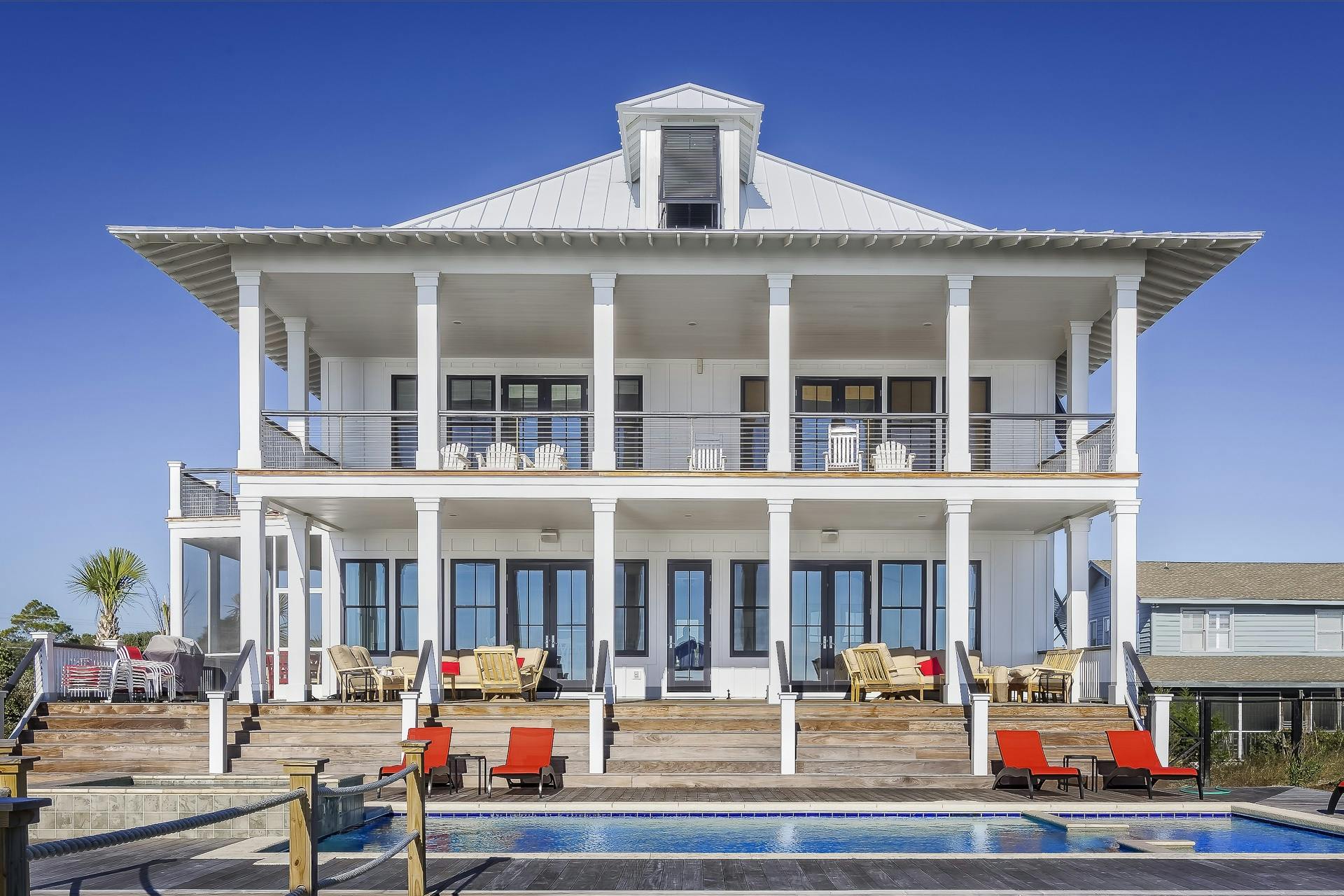
Owning a luxury property has long been a dream for many but an unattainable reality for most. The hefty price tags, ongoing maintenance costs, and limited access to high-demand areas have often kept luxury real estate in the hands of the wealthiest few. However, a new trend is changing the game: fractional ownership.
Fractional ownership is reshaping how individuals access high-end properties by allowing multiple buyers to share the costs and benefits of owning a single property. It’s not only making luxury real estate more accessible to first-time homebuyers but also offering a fresh investment avenue for seasoned real estate investors. In this blog, we’ll explore how fractional ownership works, its benefits, and how it’s revolutionizing the U.S. real estate market.
What Is Fractional Ownership?
At its core, fractional ownership allows multiple individuals or entities to purchase a share in a property. Each co-owner holds a percentage of the property, typically based on their financial contribution. This model enables buyers to enjoy the perks of owning a luxury home—such as exclusive locations and premium amenities—without bearing the full financial burden.
Unlike traditional timeshares, fractional ownership offers true equity. Owners can sell their shares, potentially profit from property appreciation, and have more flexibility in usage.
For example, a $3 million vacation home in Aspen might be out of reach for most buyers. But under a fractional ownership model, a group of eight buyers could each purchase a 1/8 share for $375,000. Each owner then gains access to the home for an allotted amount of time annually while sharing maintenance and operational costs.
How Does Fractional Ownership Work?
Fractional ownership models vary, but they typically involve these key components:
- Equity Sharing: Owners hold a deeded percentage of the property, giving them true ownership rights.
- Usage Agreements: A predetermined schedule outlines how owners can use the property, often rotating yearly to ensure fairness.
- Management Services: Many fractional properties are managed by third-party companies that handle maintenance, cleaning, and other operational aspects, allowing owners to enjoy a hassle-free experience.
- Exit Strategies: Owners can sell their shares on a secondary market, often at a profit if the property has appreciated in value.
Fractional ownership is commonly facilitated by platforms or companies that specialize in co-ownership models, ensuring the legal and logistical aspects are handled seamlessly.
The Benefits of Fractional Ownership
Fractional ownership appeals to a wide range of buyers, from first-time homebuyers looking to dip their toes into the luxury market to seasoned investors seeking portfolio diversification. Here’s why:
1. Lower Entry Costs
The most significant barrier to entering the luxury real estate market is cost. With fractional ownership, buyers can own a share of a multimillion-dollar property without committing to the full purchase price.
For first-time buyers, this model provides a stepping stone into real estate ownership. For investors, it’s a way to allocate capital efficiently while gaining access to high-value assets.
2. Diversification Opportunities
Instead of putting all their resources into one property, investors can diversify by purchasing shares in multiple luxury properties. This spreads risk across different locations and markets, making it a savvy strategy for long-term growth.
For example, an investor might hold shares in a beachfront condo in Miami, a ski chalet in Colorado, and a penthouse in New York City, balancing potential returns across varying markets.
3. Hassle-Free Management
Luxury properties often come with high maintenance demands, from landscaping to repairs. In a fractional ownership setup, a management company usually takes care of these responsibilities. This “hands-off” model is ideal for buyers who want the perks of ownership without the headaches.
4. Access to Prime Locations
Owning property in elite areas—such as Malibu, Manhattan, or Palm Beach—has historically been limited to a privileged few. Fractional ownership breaks this barrier, enabling a broader audience to access prestigious locations.
5. Flexible Usage
Unlike traditional investment properties that are often rented out full-time, fractional ownership allows personal use. Owners can enjoy the property for a few weeks or months each year, making it an excellent choice for vacation homes or seasonal retreats.
Fractional Ownership vs. Timeshares: What’s the Difference?
While fractional ownership and timeshares may seem similar, they are fundamentally different.
- Ownership Structure: Timeshares grant the right to use a property for a specific period but don’t provide actual ownership. Fractional ownership offers deeded ownership, meaning you hold equity in the property.
- Resale Value: Timeshares typically depreciate, while fractional ownership can appreciate in value, allowing owners to profit from their investment.
- Flexibility: Fractional ownership often provides more flexible usage terms, whereas timeshares have rigid schedules.
These distinctions make fractional ownership a more attractive and financially sound option for those seeking luxury real estate.
Who Is Fractional Ownership For?
Fractional ownership is appealing to a diverse range of buyers.
First-Time Homebuyers
For those entering the real estate market for the first time, fractional ownership offers an affordable way to gain experience with property ownership. It’s particularly enticing for younger buyers who may not yet have the capital for a full property purchase but want to build equity and enjoy luxury living.
Vacation Home Seekers
Many buyers dream of owning a second home but can’t justify the cost of a property they’ll only use part-time. Fractional ownership allows them to enjoy a vacation home without the financial burden of full ownership.
Experienced Investors
For seasoned investors, fractional ownership is an opportunity to diversify portfolios and explore the high-end market. The model also enables access to properties in various locations, reducing geographic risk and maximizing return potential.
Digital Nomads and Part-Time Residents
As remote work continues to thrive, fractional ownership appeals to those who split their time between cities. This model allows them to own a share of a luxury property in multiple locations, offering a comfortable and consistent lifestyle.
Legal and Financial Considerations
While fractional ownership offers numerous benefits, buyers should approach it with careful planning and due diligence. Here are a few key considerations:
- Legal Agreements: Ensure all co-ownership agreements are transparent and legally binding. These documents should clearly outline usage terms, maintenance responsibilities, and exit strategies.
- Financing Options: Traditional mortgages may not apply to fractional ownership shares. Buyers often need to pay cash or explore alternative financing solutions.
- Tax Implications: Owners should understand the tax liabilities associated with their share, including property taxes and potential capital gains upon resale. Consulting a tax professional is highly recommended.
- Resale Market: While fractional ownership offers equity, the resale market is less established than traditional real estate. Buyers should consider the liquidity of their investments.
The Growing Popularity of Fractional Ownership in the U.S.
Fractional ownership is gaining momentum in the U.S. real estate market, fueled by technological advancements and changing buyer preferences. Platforms like Pacaso, Kocomo, and Ember are making it easier than ever to invest in luxury properties through co-ownership.
According to industry reports, the fractional ownership market is expected to grow significantly in the coming years, driven by demand from millennials and Gen Z buyers who prioritize experiences over material possessions. Additionally, rising real estate prices in major U.S. cities are making this model increasingly attractive to those seeking affordable entry points.
Is Fractional Ownership Right for You?
Deciding whether fractional ownership aligns with your goals depends on your financial situation, lifestyle preferences, and long-term plans. Here are a few questions to ask yourself:
- Are you looking for a cost-effective way to own luxury real estate?
- Do you plan to use the property regularly for personal enjoyment?
- Are you comfortable sharing ownership with others?
- Do you have the financial flexibility to pay upfront or explore alternative financing?
- Are you open to the risks and rewards of a newer, less liquid investment model?
For first-time homebuyers, fractional ownership can serve as a gateway to real estate ownership while providing a taste of luxury living. For seasoned investors, it’s an opportunity to expand portfolios and access properties that might otherwise be out of reach.

Fractional ownership is transforming the way Americans approach luxury real estate. By lowering entry barriers, offering true equity, and providing hassle-free management, it’s making dream properties accessible to a broader audience.
Whether you’re a first-time buyer yearning for a beachfront getaway or an experienced investor seeking portfolio diversification, fractional ownership offers a compelling alternative to traditional real estate. As the market continues to evolve, this innovative model is poised to become a cornerstone of the U.S. real estate landscape.




